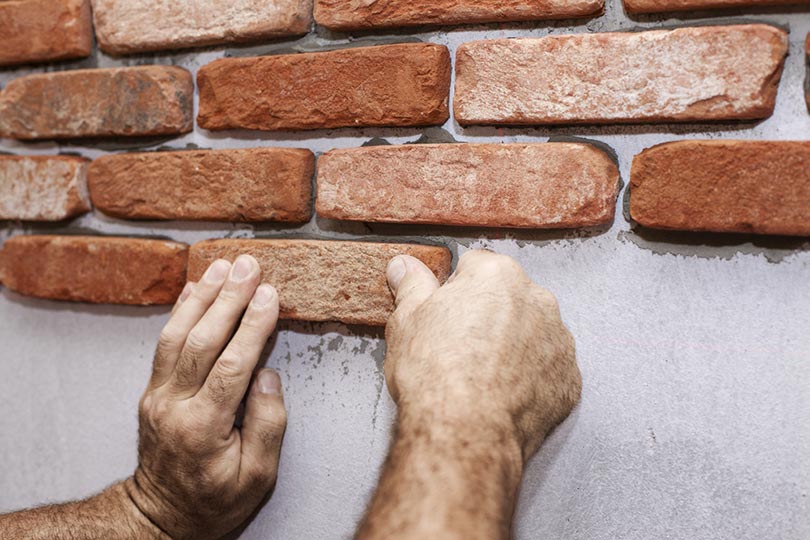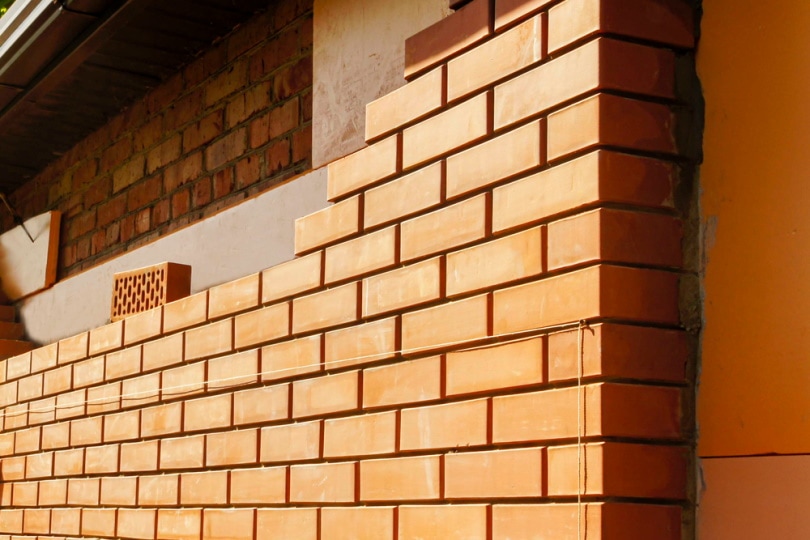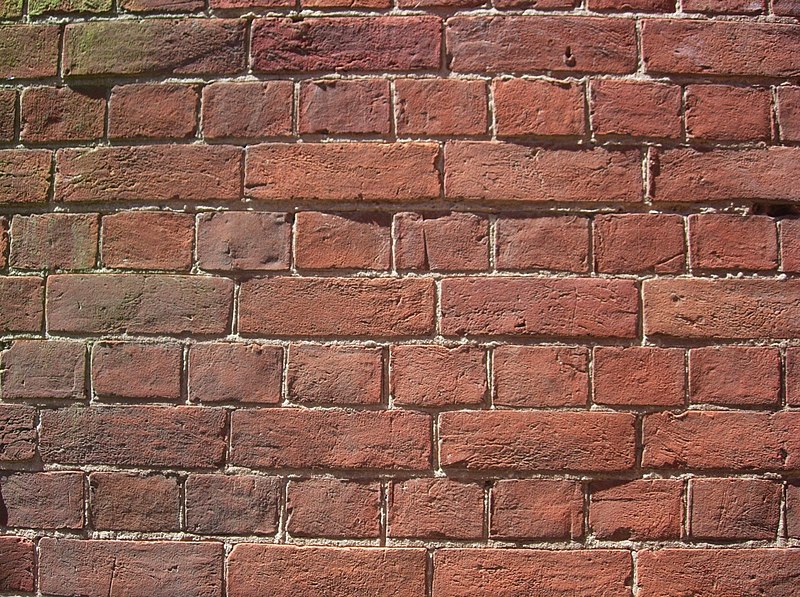What Is Brick Veneer? How Is It Different From Solid Brick?
-

- Last updated:

Solid brick walls and brick veneer walls are two types of structural walls used in the building of houses and other buildings. Bricks are strong, look attractive, and protect against the elements. They have been used for nearly 10,000 years, although early bricks were made from more basic materials and used simpler drying techniques.
Traditionally, brick houses were built using solid brick walls. These walls have two layers, or wythes, of brick which provide structural support for the building and also offer the aesthetic benefits of an attractive brick finish.
A brick veneer wall uses another material to give structural stability—typically, a concrete or timber frame. It has a single external layer of bricks used as siding for its visual appeal. Brick veneer is commonly used in modern construction because it is less expensive and offers greater insulation opportunities compared to a solid brick structure.
Read on for more information on the differences between these two styles of walls.
Solid Brick
Solid brick walls have two layers of brick, usually constructed against one another, although some walls may use two or more layers. To save money, the internal layer of brick may be replaced with cinder blocks or another less expensive construction material, but the design remains the same and is still referred to as a solid brick wall. There is very little or no space between the layers of brick.

Advantages of Brick
- Brick is fireproof, durable, and will withstand most weather and environmental conditions. A well-built brick wall can last for hundreds of years.
- Unlike constructions that include timber, solid brick walls are insect-proof, so they won’t suffer termite damage.
- Brick doesn’t decay like wood, which makes it an ideal choice of material when constructing in and on the ground.
- Very little maintenance is required to ensure the strength and longevity of a solid brick wall construction. The brick doesn’t need to be painted or treated.
Disadvantages of Brick
- Solid brick walls are not a good choice if additional insulation is required and if the brick itself is a poor insulator.
- The cost of the wall itself is higher with a brick wall construction compared to a brick veneer finish, although this may be offset by the fact that there are no additional insulation or filling costs.
Brick Veneer
A brick veneer wall uses some other material or frame as a base layer and has a single layer of bricks on the exterior of the wall. The bricks act as siding. They do offer some protection for the frame underneath and give the visual appeal of a brick finish. Brick veneer was popularized in the early 20th century as a more affordable alternative to solid brick construction.

Advantages of Brick Veneer
- Because it only uses a single layer of brickwork, a veneer finish is easier to install. It can also be installed later in the build, even once the build has been finished.
- The gap between the brick veneer and the timber or metal frame keeps moisture out. It can also be filled with insulation material to provide thermal insulation.
- The cost of the wall itself is much cheaper with brick veneer than solid brick. However, if you add insulation, the costs add up.
- Veneer still offers the same attractive and popular brick finish as a solid brick wall.
Disadvantages Of Brick Veneer
- Brick veneer is a single layer of brick rather than two or three layers, which means that it is not as durable or tough.
Brick Veneer vs. Brick Costs
Brick veneer became popular because it is cheaper than solid brick wall construction. Costs vary according to where you live, the quality of the craftsman, and even the choice of brick. However, expect to pay $20–$50 per square foot for the materials and construction of a solid brick wall.
Brick veneer costs between $5–$15 per square foot because it doesn’t usually require a mason.
What Is Brick Veneer Made Of?
Brick veneer consists of a single layer of bricks laid over a timber or steel frame. It uses the same type of bricks as a solid brick wall, but fewer of them.
How Long Does Brick Veneer Last?
Brick walls have a lifespan of 500 years or more, although they will typically last 200 years, while brick veneer walls can last from 50–100 years. What you decide to go with is ultimately up to your needs and preferences. Hopefully, this article helped you understand what brick veneer is and how it differs from real brick.
- https://brickarchitecture.com/about-brick/why-brick/the-history-of-bricks-brickmaking
- https://www.brick.org.uk/admin/resources/whole-life-performance-of-clay-masonry-adrian-bown-2007.pdf
- https://www.paragontools.ie/how-long-does-brick-veneer-last
- https://heckmannbuildingprods.com/blog/difference-between-solid-masonry-and-brick-veneer
- https://www.yourownarchitect.com/what-is-the-difference-between-brick-and-brick-veneer/
- https://www.textureplus.com/brick-vs-brick-veneer/
Featured Image Credit: cnikola, Shutterstock
Contents



